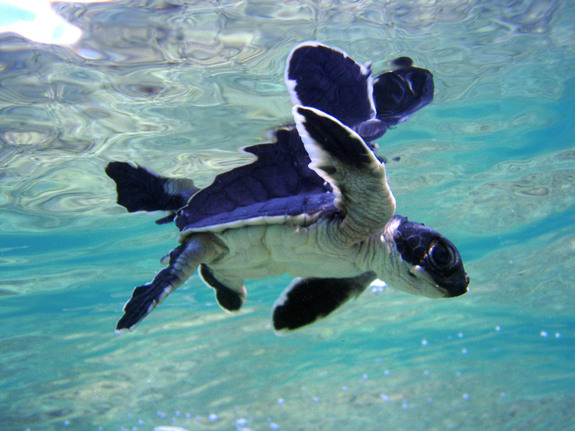
By Stephanie Pappas, Live Science Contributor, SouthFloridaReporter.com, Dec. 29, 2015 – The far-flung journeys of juvenile sea turtles could mean that the impact of 2010’s Deepwater Horizon oil spill was global.
More than 300,000 sea turtles were likely in the region of the Gulf of Mexico affected by the oil spill, according to a new computer simulation. About three-quarters of these marine animals probably came from Mexican nesting populations, the research found. Others hailed from South America, Costa Rica and as far away as western Africa.
As a result, efforts to rehabilitate the environment after the spill should likely reach far beyond the Gulf Coast of the United States, said study researcher Nathan Putman, a biologist at the University of Miami. [See Images of the Aftermath of the Deepwater Horizon Oil Spill]
A serious spill
On April 20, 2010, an explosion rocked the Deepwater Horizon oil rig, which was operating on a BP-owned well in the Gulf of Mexico. Oil gushed from the well bore at the bottom of the gulf until July 15.
Research in the gulf has found possible long-term impacts on wildlife, including a high mortality rate and a low number of bottlenose dolphin calves in the region. But it was difficult to measure the wildlife impacts, Putman told Live Science, because of the challenge of determining how many animals were passing through at the time of the spill.
Oil can affect sea turtles by coating them with irritating petrochemicals, which can cause inflammation and even organ damage. Oil can also indirectly impact turtles by affecting animals lower in the food chain, making it harder for turtles to find food. Finally, oil slicks can kill the seaweed that tiny baby turtles use to camouflage themselves from predators. According to the National Wildlife Foundation, five times as many sea turtles strandings as usual occurred after the Deepwater Horizon spill. Still, strandings only hint at impacts that might be occurring far from shore, away from easy observation by humans.












